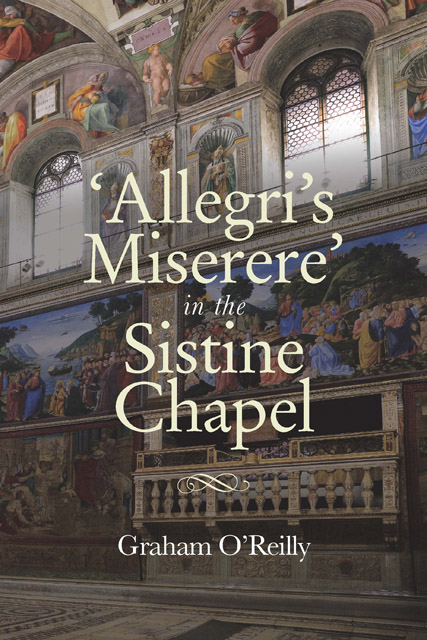Book contents
- Frontmatter
- Contents
- List of illustrations
- List of tables
- List of music examples
- Acknowledgments
- Note on the text
- Introduction: myth and reality
- Part One The Sixteenth and Seventeenth Centuries
- Part Two The Eighteenth Century
- Part Three The Nineteenth Century
- Part Four Performing the Miserere in the Twentieth Century
- Part Five Appendices, Editions and Notes
- List of appendices
- Bibliography
- Index
16 - Aspects of performance practice 2 – Expression
Published online by Cambridge University Press: 13 January 2023
- Frontmatter
- Contents
- List of illustrations
- List of tables
- List of music examples
- Acknowledgments
- Note on the text
- Introduction: myth and reality
- Part One The Sixteenth and Seventeenth Centuries
- Part Two The Eighteenth Century
- Part Three The Nineteenth Century
- Part Four Performing the Miserere in the Twentieth Century
- Part Five Appendices, Editions and Notes
- List of appendices
- Bibliography
- Index
Summary
Dynamics
The dynamics found in A necessitate much filling out, even after applying them in strictly parallel places. They are also sometimes puzzling, as noted in Chapter 9, because the chanted sections are always marked f and the polyphony p, which hardly accords with contemporary descriptions of the variations possible. Mendelssohn, speaking of the performances in 1831, is perhaps the most eloquent:
The best voices are reserved for the Miserere, which is sung with the greatest variety of effect, the voices swelling and dying away and rising again from the quietest piano to the full strength of the choir. No wonder that it excites deep emotion in every listener.
Herold, sixteen years earlier, had also observed this, and added some technical detail.
The effect of this music really is a function of its execution; the pianos and the fortes are very important for this effect; the swelling sounds, either held for a long time or suddenly cut off, are also very fine.
Nor could Spohr’s description (in Chapter 8) of the very first chord as ‘a beautiful 5-part chording, tender and pure, like a harmony from another world’ be indicated by f in its normal sense.
No doubt f often simply meant louder than p rather than simply loud, and p not necessarily soft, but in any case softer than f. But it may be even more subtle than that. It was suggested in Chapter 9 that these indications are roughly equivalent to a piacere and a misura, which are found in the earliest manuscripts (Man and P) and which reappear in M. Historically the relation is made explicit by Mil, which replaces the a piacere and a misura indications of Man and P with for[te] and dol[ce], while retaining a very large part of the earlier readings. The real meaning of forte in this context is therefore dramatic, i.e. following the meaning of the text (a piacere – occasionally col direttore in M); while dolce implies regularly and calmly following the written notes, i.e. a misura. In the first the sense of the words predominates, in the second the musical composition.
- Type
- Chapter
- Information
- Allegri's Miserere in the Sistine Chapel , pp. 227 - 240Publisher: Boydell & BrewerPrint publication year: 2020



